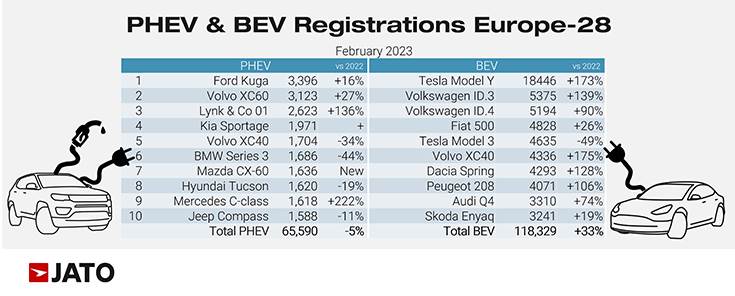The films will be released during the IPL 2023, scheduled to take place from today to 28 May 2023. The campaign is about how people go far for love, for dreams, or for themselves and in the true IPL spirit, for their squad. Spinny, the full-stack used car buying and selling platform, has launched its… Continue reading Spinny launches IPL campaign Go Far
Category: US Motoring Press
BLive, Chartered Bike ink Rs 120 crore MoU
BLive, a Bengaluru-based electric vehicle platform, has signed a Memorandum of Undertaking (MoU) with Chartered Bike (CBPL) for around Rs 120 crore. The estimated deployment is in three phases, Rs 30 crore in the first year, Rs 40 Cr in the second, and Rs 50 crore in the third year. The partnership between BLive and CBPL is… Continue reading BLive, Chartered Bike ink Rs 120 crore MoU
Piaggio Vehicles appoints Ajay Raghuvanshi as Executive Vice President of 2W Domestic Business (ICE)
Piaggio Vehicles appoints Ajay Raghuvanshi as Executive Vice President of 2W Domestic Business (ICE) Piaggio Vehicles, the 100 percent subsidiary of the Italian auto giant Piaggio Group, has announced the appointment of Ajay Raghuvanshi as the Executive Vice President of 2W Domestic Business (ICE). Raghuvanshi will be reporting to Diego Graffi, Chairman and Managing Director… Continue reading Piaggio Vehicles appoints Ajay Raghuvanshi as Executive Vice President of 2W Domestic Business (ICE)
MoHI sanctions Rs 800 crore to OMCs to set up 7,432 fast charging stations
In a bid to boost the eco-system for the adoption of electric vehicles, the Ministry of Heavy Industries has sanctioned Rs 800 crore under FAME India Scheme Phase II to the PSU Oil Marketing Companies (OMC) – Indian Oil (IOCL), Bharat Petroleum (BPCL), and Hindustan Petroleum (HPCL) – for setting up 7432 public fast charging… Continue reading MoHI sanctions Rs 800 crore to OMCs to set up 7,432 fast charging stations
MoHI sanctions Rs 800 crore to OMCs to set up 7,432 fast charging stations
In a bid to boost the eco-system for the adoption of electric vehicles, the Ministry of Heavy Industries has sanctioned Rs 800 crore under FAME India Scheme Phase II to the PSU Oil Marketing Companies (OMC) – Indian Oil (IOCL), Bharat Petroleum (BPCL), and Hindustan Petroleum (HPCL) – for setting up 7432 public fast charging… Continue reading MoHI sanctions Rs 800 crore to OMCs to set up 7,432 fast charging stations
Commercial vehicle financing to bounce back on the backdrop of pick up in sales
On the backdrop of growth in commercial vehicle (CV) sales, CV financing is also expected to bounce back. Interestingly, the used CV segment, largely dominated by Non-Banking Finance Companies (NBFCs), can clock a stable growth rate despite headwinds in the last few years. It may be noted, the growth of CV sector remains primarily dependent… Continue reading Commercial vehicle financing to bounce back on the backdrop of pick up in sales
Odysse Electric Vehicles launches VADER at introductory price of Rs 1,09,999 (ex-showroom Ahmedabad)
Odysse Electric Vehicles launches VADER at introductory price of Rs 1,09,999 (ex-showroom Ahmedabad) Mumbai-based electric vehicle manufacturer Odysse Electric Vehicles has launched its new electric motorbike VADER at an introductory price of Rs 1,09,999 (ex-showroom Ahmedabad). Odysse Electric Vehicles also aims to launch an electric scooter in 3Q23. The completely Made in India bike is the country’s first… Continue reading Odysse Electric Vehicles launches VADER at introductory price of Rs 1,09,999 (ex-showroom Ahmedabad)
Odysse Electric Vehicles launches VADER at introductory price of Rs 1,09,999 (ex-showroom Ahmedabad)
Odysse Electric Vehicles launches VADER at introductory price of Rs 1,09,999 (ex-showroom Ahmedabad) Mumbai-based electric vehicle manufacturer Odysse Electric Vehicles has launched its new electric motorbike VADER at an introductory price of Rs 1,09,999 (ex-showroom Ahmedabad). Odysse Electric Vehicles also aims to launch an electric scooter in 3Q23. The completely Made in India bike is the country’s first… Continue reading Odysse Electric Vehicles launches VADER at introductory price of Rs 1,09,999 (ex-showroom Ahmedabad)
Citroen India exports first batch of C3s to ASEAN and Africa
Four weeks after PAIPL (PCA Automobiles India Pvt Ltd),, the Indian affiliate of Citroen India, signed a Memorandum of Understanding with Kamarajar Port Ltd (KPL) to commence its export programme from India, the carmaker has begun shipping its cars to overseas markets as completely built units (CBUs). On March 31, 2023, the first batch of… Continue reading Citroen India exports first batch of C3s to ASEAN and Africa
EVs drive new car sales in Europe, BEVs gain share in 25 of 28 markets in February
EVs drive new car sales in Europe, BEVs gain share in 25 of 28 markets in February New car sales data for Europe for February 2023 is out and the number of new passenger car registrations totalled just over 900,000 units – up by 12% compared to February 2022. Combined January-February sales totalled 1.81 million… Continue reading EVs drive new car sales in Europe, BEVs gain share in 25 of 28 markets in February
